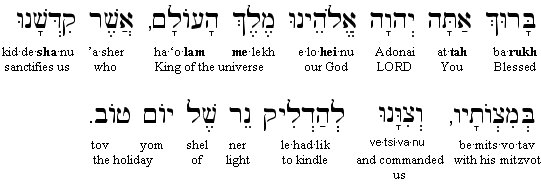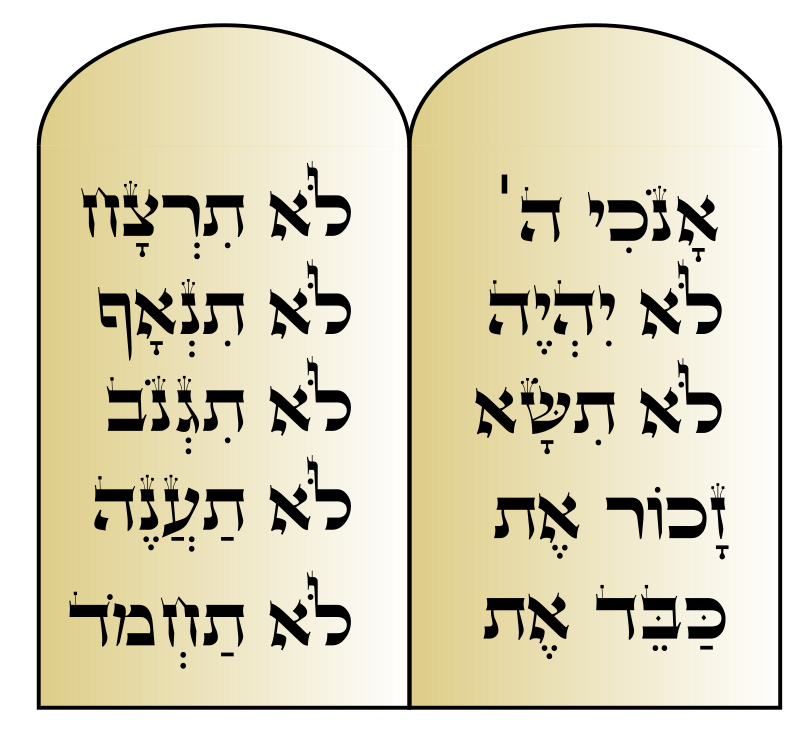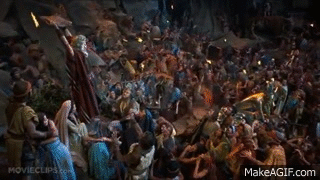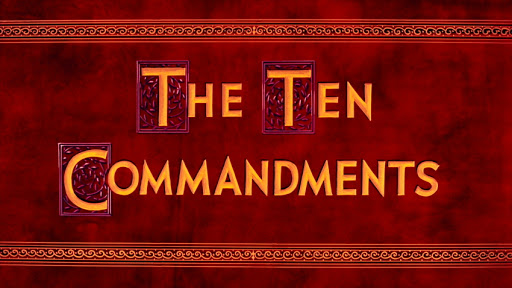Tag: israel
Coming Through Passover, Omer Countdown, Shavuot & Pentecost. Day-50; 7-Weeks and the Day After. Omer to Shavuot.
Blessing
[Recited at Nightfall] 
Fig 2
Overview
Counting Log: 7-Weeks. Week 7 completed. Day 50. Sivan 5781 May 2020
Moses: the Receiver of the Law
Passover, Omer, Shavuot, and Pentecost; “What do all these have in common?” All of these are centered on the Exodus and Theme of Passover. Passover is the positive outcome of a horrific ordeal. It also, is rightly called the “Celebration of Freedom.” It recalls and calls to a memorial, the liberation of a people who withstood 400+ years of brutal servitude as bondmen and bondwomen. The forgotten and often unmentioned aspect of the timeline is that it was foretold to Abram (his name was not yet changed to Abraham), that his seed would go into bondage. Genesis/Bereshit 15:13-14. The above main title figure displays for us “The SHAVUOT is the culmination of the count, it is the Giving of the Law, it is Honoring the L-RD with Your First-Fruits, It is the Fiftieth Day.”
Fig 3
Destroying The First Ten Commandments-Tablets of Stone
The Children of Israel’s error of Idolatry shown above in Fig 2, causes Moses to destroy the first Ten Commandments. (The Ten Commandments are also called “The Tablets of Stone”.) The Afro-Centric Hebrew group consisted of more than 600,000 men, women and children, of which, only 14,000 of those were the original Hebrews. Sixty-six souls joined Joseph there in Egypt; including his father Jacob/Yaakov who’s name was changed to Israel. Joseph, Ephraim, Manasseh and wife, Asenath, as a family, were already in Egypt (Gender Troubles, 1029, pp. 41-45); (Rabbi Levi Solomon Plummer, circa 1980s). The six-hundred-thousand, which also consisted of other neighboring countrymen including the Egyptians –who believed GD, they comprised the “mixed multitude”.
Fig 4
Giving Your First-Fruits
It is important to note that the Hebrews (the Children of Israel (COI)) were not the only ones to leave Egypt within The EXODUS. In the inclusion, were these idol worshipers, including The Egyptians who served multiple gods. They profoundly impacted the many crucial decisions made by the Hebrews. Israelites are still cursed with these surrounding nations the Jebusites, the Hivites, the Perizzites, the notorious Canaanites et cetera, because, Elohim judges the Israelites by their ability to be loyal, to be steadfast, and to be loving to Him always, no matter what the conditions or the circumstances that surrounds one’s life. The “First-Fruits” is giving ELOHIM the first obligation of your portion and your increase. It is “The Giving of Thanks” in honor and in gratitude for allowing you to cross over your personal hurdles, it also can be given throughout the year whenever you feel Blessed. It is especially important when you have come into the land, any land, where you feel safe, secure and finally at home. And it is joyously and bountifully celebrated, as the world has copied its meaning in Thanksgiving, especially in the US in the month of November. The Hebrews were preparing for their “Meeting at the Mount of Sinai.” Where they would be given the Law. The Ten Commandments. These others, journeyed along with the Hebrews to meet and to be introduced to the GD of Israel. The above figure displays the influencers of Idolatry, although, De Mille, says by depiction, they were the Hebrews. They were not all Hebrews. However, the judgment of error is attributed to the COI.
So, “Where is the Red Sea Located?”
The Red Sea is an extension (or inlet) of the Indian Ocean, located between Africa and Asia. Entrance to the sea in the south is through the Gulf of Aden and the somewhat narrow Bab el Mandeb (strait). In the north the sea is accessed from Middle Eastern countries via the Gulf of Aqaba (or Gulf of Eilat.)
Red Sea Map and Map of the Red Sea Depth Size History … http://www.worldatlas.com › … › Middle East › RED SEA)
The Exodus from Egypt, was real, and ended the subjective hardship of the Children of Israel under Egyptian Rule. Although the main figure shows people looking of Eurocentric identity, that is an inaccurate display. So, don’t be truly, an April Fool. However, note that this theme is a familiar one to America’s past day of African Slavery, and the continuous less than noble mindset against people of color. Ultimately, The Passover is about children, whose lives would have a purpose, and whose live would make a difference. Share in the story…
The Decalogue – The Law – The Ten Commandments

Fig 5
Omer Countdown, Shavuot, & the Pentecost
The Omer is a count that is executed the first day of the week or the first Sunday following the first day of Passover. This year it occurred on April 8/ 14 Abib 5781. The year is 5781 versus 5780 because Abib/Aviv is considered, by GD, the first lunar calendar month. It is given this distinction- due to the EXODUS of The Children of Israel out of Egypt. This season marks a new beginning for a people who had formerly been oppressed and in servitude. Each week thereafter, is counted as Seven Days. While each Sunday, thereafter, begins the countdown of a new 7-Day or Week.
Shavuot (considering the transliteral spelling), is the culmination of the count. The count of 7-Weeks and 7-Days, comes out to be 49-Days. Shavuot is also called the Festival of Weeks or the Celebration of the Giving of the Law on Mt. Sinai – The Torah. Pentecost literally means 50 marking the 50th – Day of the Count.
Omer Count
If you want to follow the count, at nightfall on Thursday evening May 28, 2020, will begin day fifty, and the erev/eve and the boker/morning were Yom Echad/Day One. This evening starts Day-50 of the count. 6 Sivan 5781.
Omer Blessing
The Omer Blessing: Omer Prayer – We were commanded by the Prophet Moses by G-D to count the omer (Sefirat Ha-Omer), in order to purify us from evil and uncleanness. Be Blessed. Shalom. Namaste.
Credits
Images: Fig 1. Main Title- “Shavout -Holiday of the Giving of the TORAH–The Ten Commandments” From— “Chabad.org. Fig 2. “Shavuot”: Scripture Readings-(The Ten Commandments)” From: Pinterest. Comment: “Where is the Red Sea Located?” From: Red Sea Map and Map of the Red Sea Depth Size History URL: http://www.worldatlas.com › … › Middle East › RED SEA).; Fig 3. “The Golden Calf Idol From The Ten” -From: Ten Commandments –ltl.cat; Fig 4. Shavuot Festival-Event-Congregation Beth Israel” From Congregation Beth Israel; Fig 5. “The Ten Commandments & Non-Believers” From: The Cripplegate.
Disclaimer
Sacilliyah’s Blog on Everything Jewish, begs your understanding on the Omer Count. Literal, Jewish concepts have given theoretical theology control as to the time of the count ensuing, likewise the error persist in the start time of Pesach/Passover. The Biblical scripture is very specific in both. The official start would always follow the subscribed dictates of the timeline, thereby, adding a system of consistency. Genesis 1:5 & Lev 23:15-17. The Omer is related to living and residency in the land the L-RD has blessed you. The Sabbath referred herein, is the traditional 7th Day Sabbath, Yom Shabbat. The interpretation would follow one’s individual path, yet, in the case of the Exodus, all were arriving at the same appointed time. Therefore, this Omer Count is hereby, inscribing to Rabbinic Judaism Interpretation of the Omer Count, and not to the Orthodoxy of Prophetic Judaism, which would dictate the count starting always after Yom Shabbat on the eve of Yom Echard.
Blog 50; Volume 7
(c) 2015-2215 crew @ miracle production enterprises, inc.
Coming Through Passover, Omer Countdown, Shavouth & Pentecost. Day-49; Day 7 of Week 7. Week Seven Completed. Omer to Shavouth.
Blessing
[Recited at Nightfall]
ברוך תה יי אלהנו מלך העולם אשר קדשנו במצ-ותיו וצ-וני על ספירת העומר
Transliteration
BA-RUCH ATAH ADO-NAI E-LO-HE-NU ME-LECH HA-OLEM ASHER KID-E-SHA-NU BE-MITZ-VO-TAV VETZI-VA-NU AL SEFI-RAT HA-OMER
Blessed art THOU, Lord our God, King of the Universe, who has sanctified-us with His Commandments, and commanded us concerning the Counting of the Omer.
Overview
Counting Log: 7-Weeks. Week 7 completed. Sivan 5781 May 2020
Moses: the Receiver of the Law
Passover, Omer, Shavuot, and Pentecost; “What do all these have in common?” All of these are centered on the Exodus and Theme of Passover. Passover is the positive outcome of a horrific ordeal. It also, is rightly called the “Celebration of Freedom.” It recalls and calls to a memorial, the liberation of a people who withstood 400+ years of brutal servitude as bondmen and bondwomen. The forgotten and often unmentioned aspect of the timeline is that it was foretold to Abram (his name was not yet changed to Abraham), that his seed would go into bondage. Genesis/Bereshit 15:13-14. The above main title figure displays for us “The Title Page From the Movie: “The Ten Commandments”.”
Fig 2
Destroying The First Ten Commandments-Tablets of Stone
The Children of Israel’s error of Idolatry shown above in Fig 2, causes Moses to destroy the first Ten Commandments. (The Ten Commandments are also called “The Tablets of Stone”.) The Afro-Centric Hebrew group consisted of more than 600,000 men, women and children, of which, only 14,000 of those were the original Hebrews. Sixty-six souls joined Joseph there in Egypt; including his father Jacob/Yaakov who’s name was changed to Israel. Joseph, Ephraim, Manasseh and wife, Asenath, as a family, were already in Egypt (Gender Troubles, 1029, pp. 41-45); (Rabbi Levi Solomon Plummer, circa 1980s). The six-hundred-thousand, which also consisted of other neighboring countrymen including the Egyptians –who believed GD, they comprised the “mixed multitude”.
Fig 3
Idol Worshipers Among the Hebrews
It is important to note that the Hebrews were not the only ones to leave Egypt with the Children of Israel (COI). In the inclusion, were these idol worshipers, as well as The Egyptians, They profoundly impacted the many crucial decisions made by the Hebrews. The Hebrews were preparing for their “Meeting at the Mount of Sinai.” Where they would be given the Law. The Ten Commandments. These others, journeyed along with the Hebrews to meet and to be introduced to the GD of Israel. The above figure displays the influencers of Idolatry, although, De Mille, says by depiction, they were the Hebrews. They were not all Hebrews. However, the judgment of error is attributed to the COI.
So, “Where is the Red Sea Located?”
The Red Sea is an extension (or inlet) of the Indian Ocean, located between Africa and Asia. Entrance to the sea in the south is through the Gulf of Aden and the somewhat narrow Bab el Mandeb (strait). In the north the sea is accessed from Middle Eastern countries via the Gulf of Aqaba (or Gulf of Eilat.)
Red Sea Map and Map of the Red Sea Depth Size History … http://www.worldatlas.com › … › Middle East › RED SEA)
The Exodus from Egypt, was real, and ended the subjective hardship of the Children of Israel under Egyptian Rule. Although the main figure shows people looking of Eurocentric identity, that is an inaccurate display. So, don’t be truly, an April Fool. However, note that this theme is a familiar one to America’s past day of African Slavery, and the continuous less than noble mindset against people of color. Ultimately, The Passover is about children, whose lives would have a purpose, and whose live would make a difference. Share in the story…
The Decalogue – The Law – The Ten Commandments

Fig 4
Omer Countdown, Shavuot/Shavouth, & the Pentecost
The Omer is a count that is executed the first day of the week or the first Sunday following the first day of Passover. This year it occurred on April 8/ 14 Abib 5781. The year is 5781 versus 5780 because Abib/Aviv is considered, by GD, the first lunar calendar month. It is given this distinction- due to the EXODUS of The Children of Israel out of Egypt. This season marks a new beginning for a people who had formerly been oppressed and in servitude. Each week thereafter, is counted as Seven Days. While each Sunday, thereafter, begins the countdown of a new 7-Day or Week.
Shavouth, Shavout (considering the transliteral spelling), is the culmination of the count. The count of 7-Weeks and 7-Days, comes out to be 49-Days. Shavouth is also called the Festival of Weeks or the Celebration of the Giving of the Law on Mt. Sinai – The Torah. Pentecost literally means 50 marking the 50th – Day of the Count.
Omer Count
If you want to follow the count, at nightfall on Wednesday evening May 27, 2020, will begin day forty-nine, and the erev/eve and the boker/morning were Yom Echad/Day One. This evening starts Day-49 of the count. Malchus ShebeMalchus 5 Sivan 5781.
Omer Blessing
The Omer Blessing: Omer Prayer – We were commanded by the Prophet Moses by G-D to count the omer (Sefirat Ha-Omer), in order to purify us from evil and uncleanness. Be Blessed. Shalom. Namaste.
Credits
Images: Fig 1. Main Title-The Ten Commandments Opening Title: ” The Ten Commandments” From— “Earn This”-Brian Terrill’s 100 Fim Favorites. Fig 2. “Moses Destroying the First Tablets of Stone”: Moses Presents The Ten Commandments” From: Make A Gif. Comment: “Where is the Red Sea Located?” From: Red Sea Map and Map of the Red Sea Depth Size History URL: http://www.worldatlas.com › … › Middle East › RED SEA).; Fig 3. “The Golden Calf Idol From The Ten” -From: Ten Commandments –ltl.cat; Fig 4. “The Ten Commandments & Non-Believers” From: The Cripplegate.
Disclaimer
Sacilliyah’s Blog on Everything Jewish, begs your understanding on the Omer Count. Literal, Jewish concepts have given theoretical theology control as to the time of the count ensuing, likewise the error persist in the start time of Pesach/Passover. The Biblical scripture is very specific in both. The official start would always follow the subscribed dictates of the timeline, thereby, adding a system of consistency. Genesis 1:5 & Lev 23:15-17. The Omer is related to living and residency in the land the L-RD has blessed you. The Sabbath referred herein, is the traditional 7th Day Sabbath, Yom Shabbat. The interpretation would follow one’s individual path, yet, in the case of the Exodus, all were arriving at the same appointed time. Therefore, this Omer Count is hereby, inscribing to Rabbinic Judaism Interpretation of the Omer Count, and not to the Orthodoxy of Prophetic Judaism, which would dictate the count starting always after Yom Shabbat on the eve of Yom Echard.
Blog 49; Volume 7
(c) 2015-2215 crew @ miracle production enterprises, inc.
Learning Hebrew. A Series. Week 18 Lesson 18: “Getting Married.” Blog: 235
Hebrew
Shalom everyone: “Ma nishma?” This week in Lesson 18, we going to learn how to inflect et [alef+tav] a preposition for accompanying the pronoun you; we are also going work with the 6th group of verbs: We are at Lesson 18– “Getting Married”. Total Time [8:50].
-
SETTING: O’rit and Ronen’s Apartment in Tel Aviv
- Starring: O’rit & Ronen.
Fig. 2
Lesson Synopsis & Overview
In this lesson we will learn how to inflect the preposition את. (pronounced like the “et” in closet). We will learn how to use the 6th group of verbs in Hebrew. We will also see what happened on the morning of Orit and Ronen’s wedding day. The script / dialogue– is color coded to allow you to follow the verb or the vocabulary
- This is Lesson 18: “Getting Married”
Pronouns: masculine singular, feminine singular, masculine plural and feminine plural (Review)
- Ani (m/f) = I
- Anoknu (m/f) = we
- Atah (m-s) = you
- at (f-s) = you
- atem (m-pl) = you (pl)
- aten (f-pl) = you (pl)
- who/hu (m-s) = he or it
- he/hi (f-s) = she or it
- hem (m-/f-pl) = they or [mixed group of males and females]
- hen (f-pl) = they [female only group]
- Also mixed groups of people take the male form.
I. Preposition Groups: [0:24]
- et = you: preposition – (alef + tav); [א +ת] ; (inflected, as in conjugation, used with pronouns; pronouns are listed above and below).
- [0:24 ] et = you [alef + tav] [א + ת] See below pronouns in singular and in plural.
- e.g ani’ ohev otak — I love you [atah] (m-s). [0:37]
- e.g. ani ohev otaak — I love you [at] (f-s). [0:43]
- [0:32 – 1:05] alef + tav = [א + ת] ; (inflected below)
- ani otei [ א +ו +ת + י ] alef + vav + tav + yud]; atah otak [alef + vav +tav + khaf_sofit] [א +ו +ת +ך], at otaak (same as for atah –nikud and inflection) [א +ו +ת +ך], hu oto [alef + vav + tav + vav] [ א + ו + ת + ו], he otah [alef + vav + tav + hei] [ א + ו + ת + ה] Singular Pronouns
- anuknu otanu [alef + vav + tav + nun+ vav] [א + ו + ת + נ + ו ]; atem ekhem [alef + tav + khaf + mem_sofit] [א + ת + כ + ם], aten ekhen [alef + tav + khaf + nun_sofit] [א + ת + כ + ן], hem aotam [alef + vav + tav + mem-sofit [א + ו + ת + ם] , hen otan [alef + vav + tav + nun_sofit] [א + ו + ת + ן] Plural Pronouns [1:06]
- hee makira et danah v’ron. She knows Dana and Ron. [1:10]
- hee makira aotam. She knows them. (A mixed groups gets the male agreement. This is plural and a mixed group.) [1:15]
- anuknu otanu [alef + vav + tav + nun+ vav] [א + ו + ת + נ + ו ]; atem ekhem [alef + tav + khaf + mem_sofit] [א + ת + כ + ם], aten ekhen [alef + tav + khaf + nun_sofit] [א + ת + כ + ן], hem aotam [alef + vav + tav + mem-sofit [א + ו + ת + ם] , hen otan [alef + vav + tav + nun_sofit] [א + ו + ת + ן] Plural Pronouns [1:06]
-
Conjugating the 6th Verb Group. Present Tense [1:23]
- ani otei [ א +ו +ת + י ] alef + vav + tav + yud]; atah otak [alef + vav +tav + khaf_sofit] [א +ו +ת +ך], at otaak (same as for atah –nikud and inflection) [א +ו +ת +ך], hu oto [alef + vav + tav + vav] [ א + ו + ת + ו], he otah [alef + vav + tav + hei] [ א + ו + ת + ה] Singular Pronouns
II. Conjugations – transliteration
-
-
- Le’hechoten = to marry. (lamed +hei/hey + tav + cheit + tav + nun_sofit [final Nun]);
- [verb 6th group] [1:26]
- Le’ tza ‘lem – to take pictures/to shoot a video (*tzadi+ lamed + mem)
- [verb 4th group] [3:45] *(alternate spelling also tsadi or tsadei)
-
- [1:27] Le’he’choten – to marry = [cheit + tav + nun] [ ח + ת + נ ] = root letters
- met ‘ (c)haten [m-s]; [1:32] [מתחתן] [mem+tav+cheit+tav+nun_final]
- met ‘ (c)hatenet [f-s];
- met ‘ (c)hat’nim [m-pl];
- met ‘ (c)hat’not [f-pl]. [1:39]
-
All the forms of this verb start with [ מ+ת ] =me’t (look at the nikkud below each letter). This is typical to the sixth verb group.
- [1:47] Le’ heet’labesh – to get dressed = [lamed + bet + shin] [ל + ב +ש] = root letters
- met‘ labesh [m-s]; [1:50] [מתלבש] [mem+tav+lamed+bet+shin]
- met‘ labesh-et [f-s];
- met‘ lab‘shim [m-pl];
- met‘ lab‘shot [f-pl]. [1:58]
- [2:00] Le’ heet’tro’gesh – to be/get excited = [ resh + gimel + shin] [ר + ג + ש] = root letters
- met‘trogesh [m-s]; [2:05] [mem+tav+resh+gimel+shin]
- met’trogesh-et [f-s]; [2:08]
- met’troge’shim [m-pl;
- met’troge’shot [f-pl]. [2:10]
- [2:14] Le’ heet’quolech – to shower/to take a shower = [qof + lamed + cheit] [ ק +ל + ח ] = root letters
- mem the t‘(c)holea’ch [m-s], [2:16] (this is the guttural sound-froback of the throat throughout this verb (c)h).
- met‘cho’lach’hat [f-s];
- met‘chol‘(c)him [m-pl];
- met‘chol‘(c)hot [f-pl]. [2:24]
-
-
-
-
-
 Fig. 3
Fig. 3
-
-
-
[2:26] When the first letter of the root is shin [ש] or samech [ס]; [סש] — it switches it position with the letter tav [ת], for easier pronunciation–
-
- [2:36] Le’ hesh ‘tomesh – to use = [shin + mem + shin] [ש +מ +ש ] = root letters
- mes‘tomesh [m-s], [2:16] (this is the guttural sound-from the back of the throat throughout this verb (c)h).
- mes‘tomesh’et [f-s];
- mes’tome’shim [m-pl];
- mes‘tome’shot [f-pl]. [2:48]
- [2:53] Le’ hesh ‘torek– to comb one’s hair = [samech + resh + qof] [ס +ר +ק ] = root letters
- mes‘torek [m-s], [2:55] (this is also the guttural sound-from the back of the throat throughout this verb (c)h)/ck.
- mes‘torek’et [f-s];
- mes’tore’kim [m-pl];
- mes‘tore’kot [f-pl]. [3:03]
-
[3:06] When the first letter of the root is tzadei [צ]; — it switches it position with the letter tav [ת], for easier pronunciation– However, there is an additional modification– tav [ ת ] changes to tet [ ט ]
- [3:17] Le’ hetz ‘ta’er – to plead/be sorry = [tzadei + ayin + resh] [צ +ע +ר ] = root letters
- metz‘ta’er [m-s], [3:22]
- metz’ta’er‘et [f-s];
- metz’ta’ar’im [m-pl];
- metz’ta’ar‘ot [f-pl]. [3:30]
- [3:33] Le’ hetz ‘ta’lem – to be photographed/filmed = [tzadei + lamed+mem] [ צ + ל + מ ] = root letters
- metz‘ta’lem [m-s], [3:34]
- metz’ta’lem‘et [f-s];
- metz’tal’mim [m-pl];
- metz’tal’mot [f-pl]. [3:43]
- [3:45] Le’tza’lem – to take pictures/to shoot a video = [tzadei + lamed+mem] [ צ + ל + מ ] = root letters [member of the 4th verb group]
- met’tza’lem [m-s], [3:58]
- met’tza’lem‘et [f-s];
- met’tzal’mim [m-pl];
- met’tzal’mot [f-pl]. [4:04]
III. Vocabulary [4:09]
- [4:12] busy- a’sook; [layin + samech + vav + qof]
- [4:18] really – ma’mash [mem + mem + shin]
- ani ma’mash a’sook I am really busy.
- [4:26] soap- sa’bon; [samech+ bet + vav+nun-sofit]
- [4:30] quietly- be’she’ket; [bet + shin + qof + tet ]
- adverb–means “in quiet” “be” = in “she’ket” = quiet
- [4:43] already – ka’var; [qof + b/vet – resh]
- [4:45] normal – normali [m-s]; [nun + vav + resh + mem + lamed + yud]
- [4:51] normal – normalit [f-s]; [nun + vav + resh + mem + lamed + yud + tav].
- [4:56] naked – a’ room; [ ayin + resh + vav + mem-sofit]
- [5:06] honey/darling/sweetie – ma’ mi [m/f] [mem + alef + mem + yud] …a term of endearment. It is asexual, can be used by both sexes.
- Dialogue begins: “Getting Married.” Let’s listen in. [5:15]
IV. The Dialog : “Getting Married.” [Dialogue 5:19] [Dialogue w/ Hebrew Subtitles- 7:29]
Getting Married: Fig. 4
- Orit: [Orit adjusting camera] [5:23] [7:27] “Boker tov”! Good morning! [She then introduces herself while Ronen looks on] (capitalization is for English understanding; there are no capital letters in Hebrew)
- Orit: (O’rit to camera) [5:29] Ani v’Ronen met ‘ hat’nim ha’yom, v’ani ka’var; met’trogesh-et. ma’ mi? Me and Ronen [Ronen & I] are getting married today, and I am really excited… Sweetheart? sweetie/darling/honey? [5:22] [7:34]
-
- Ronen: ma? What?
- Orit : atah ba Le‘ hetz ‘ta’lem ? You’re here take pictures/shoot a video? [5:35] [7:39]
- Ronen: ani lo rotzah Le’ hetz ‘ta’lem. ani a’sook. I don’t want to take pictures. I am busy. [5:36] [7:40]
- Orit: atah lo met‘trogesh? You’re not excited? [5:39][7:44]
- Ronen: met‘trogesh , met‘trogesh. Excited, excited..
- Ronen continues: at lo Le’ heet’labesh? Don’t you have to get dressed? [5:41] [7:46] (scene change)
- Orit: (O’rit to Ronen in the shower…) ma’ mi? atah ema shelakh ba’telefon. Sweetie, your mother is on the telephone. [5:46] [7:50]
- Ronen: (Ronen-off-camera and in the shower). –ani lo y’kol la’daber aksha I can not talk now! Ani met‘(c)holea’ch. I’m taking a shower. [5:47] [7:53] (Ronen continues)
- Orit: hu, lo y’kol la’daber ackshav. Hu met‘(c)holea’ch. He cannot talk right now. He’s taking a shower. [5:51] [7:56]
- [7:58] Ronen: ma at_aysha po? What are you doing here? [5:57]
- Orit: ani mes‘torek’et. I am combing my hair. [Orit continues] atah mes‘tomesh ba’ sa’bon hadash? Are you using the new soap? ma’ mi? Sweetie? [6:00] [8:07]
- [8:10] Ronen: [aggravatedly) ma? What? [6:04]
- [8:11] Orit: (Orit to Ronen off screen): atah mes‘tomesh ba’ sa’bon hadash? Are you using the new soap? [6:06]
- [8:12] Ronen: ani lo yodea. ani rotzah Le’ heet’quolech be’she’ket. I don’t know. I want to take a shower in quiet (peace). [6:08]
- [8:15] Orit: slicha ma’ mi sheli, ani metz’ta’er‘et. Sorry Sweetie. I am sorry. [6:11]
- [8:20] Orit: (Orit to camera): hu ma’mash ohev otei, v‘ gam, v’ani ma’mash ohevah oto. He really loves me and I (also) really love him (too). [6:16]
- [8:27] Ronen: [Coming out of the shower, Ronen looks toward the camera] (Makes a long sigh in exasperation); at lo normalit! You’re not normal! (You are crazy!) ma at met’tza’lem‘et can? What are you shooting/filming here? (“Why the hell are you shooting here?”) ani a’ room! I am naked! [6:22]
/https://public-media.si-cdn.com/filer/lostark_main_dec07_631.jpg) Fig. 5.
Fig. 5.
V. Vocabulary and Phrases Explained by Daniel
[6:35] [7:26]
- [6:35] Orit: [talking to camera] ani v’ronen ma’kirim ka’var (c)ha’mesh shanim. Me and Ronen [Ronen & I] have known each other for 5-years already. [6:37] [7:26]
- [6:48] Orit: hu ma’mash ohev otei, (v’ gam) v’ani ma’mash ohevah oto. He really loves me and I (also) really love him. [6:54] [8:20]
- [7:00] Ronen: at lo nomalit! You’re not normal! (You are crazy!) ma at metz’ta’lem‘et can? What are you shooting/filming here? (“Why the hell are you shooting here?” ani a’room! I am naked! [7:23]
-
Adjectives-vocabulary
- none
Verbs Used Explained
- Only three verb tense – Past, Present, Future
Vocabulary with Dialogue:
- see above
Shalom. See you soon! Ve’L’hitriot!
Comments
- Comment: moderately long lesson. Length: [8:50]
- Open in new window; view side-by-side.
- Oh, when you see this (c)h –remember – that this sound is “guttural” no English equivalent; the closest sound is “loch” as in loch ness.
- Question and Answer Worksheets are below: The Closing.
Questions in Lesson
- none
Review Lesson-none
Review of the frequently used pronouns
- “hee” = she;
- “hen” = they feminine plural;
- “hu” = he; masculine singular
- “hem” = is they; masculine or mixed group plural);
- “gam” = also; v’gam = and also
- “anachnu” = we .
- “atah” = you (m-s);
- “at” = you (f-s),
- “atem” = you (m/f-pl).
- “aten” = you (f-pl)
- zi, zot = “this”, “these.”
Closing Conclusion & Summary
In this lesson we learned how to chat about asking for help. Up Next: Lesson – 19: “Going to the Movies.”
Exercises: https://goo.gl/NMxBhL; Answers: https://goo.gl/KKEzKE
Self-test: none
During our learning Hebrew journey, don’t be discouraged. It does take some time, but you are empowered. Namaste. Most importantly, find your peace while you study & we will stay the course. Shalom.
 Fig. 6
Fig. 6
Credits:
Images/Video by: Main: Fig. 1 Yemenite Jews a Wedding: “Jewish Israelis of Yemenite Heritage Continue reading Learning Hebrew. A Series. Week 18 Lesson 18: “Getting Married.” Blog: 235
Learning Hebrew. A Series. Week 17 Lesson 17: “Can You Help Me?” Blog: 234
Hebrew
Shalom everyone: “Ma nishma?” This week in Lesson 17, we going to learn how to ask for study help; we are also working with adverbs and to express one’s needs and abilities: We are at Lesson 17– “Can you Help Me?”. Total Time [9:37].
-
SETTING: Mi’chal and Doron’s Apartment in Tel Aviv
- Starring: Mi’chal and Do’ron.
 Fig. 2
Fig. 2
Lesson Synopsis & Overview
In this lesson we will learn how to inflect the preposition של. You will learn how to use adverbs in Hebrew, and how to express needs and abilities. We will also see what happened when Doron asked Michal for help with his homework.
- This is Lesson 17: “Can you help me?”
Pronouns: masculine singular, feminine singular, masculine plural and feminine plural (Review)
- Ani (m/f) = I
- Anoknu (m/f) = we
- Atah (m-s) = you
- at (f-s) = you
- atem (m-pl) = you (pl)
- aten (f-pl) = you (pl)
- who/hu (m-s) = he or it
- he/hi (f-s) = she or it
- hem (m-/f-pl) = they or [mixed group of males and females]
- hen (f-pl) = they [female only group]
- Also mixed groups of people take the male form.
I. Adverb Groups: [0:28]
- shel = of: adverb – (shin + lamed); [ש + ל ] ; (also used in the possessive case ‘mine’, ‘my’ )
- [0:28] Shel = of [shin + lamed] [ש + ל ] See below pronouns in singular and in plural.
- e.g Ha’ chover shel do‘rit– The friend of Dorit; Dorit’s friend. [0:34]
- [0:43 – 1:05] sheli = [ shin+ lamed + yud] [ ש + ל + י];
- ani sheli; atah shelakh [shin + lamed +khaf_sofit] [ ש +ל +ך], at shelaak (same as for atah –nikud and inflection), hu shelo [shin + lamed + vav] [ ש + ל + ו ], he shelah [shin + lamed + hei] [ ש + ל + ה] Singular
- anuknu shelanu [shin + lamed + nun + vav] [ ש + ל + נ + ו ] ; atem shelakhem [shin + lamed + khaf + mem_sofit] [ש +ל + כ + ם ], aten shelakhen [shin + lamed + khaf + nun_sofit] [ש +ל+ כ+ן ], hem shelahem [shin + lamed + hei + mem-sofit [ ש + ל + ה + ם] , hen shelahen [shin + lamed + hei + nun_sofit] [ ש + ל + ה +ן] [1:08] Plural
-
[1:09] These words always appear after the noun; the noun must be definite, as in the case above “the friend,” and preceded by Ha.
- e.g. *HaYeladim shelakhem… The children of… Their children *capitalized only for emphasis
- e.g. HaSafer she’lah… Her book
- e.g. HaMachshev shelaak… His computer
-
[1:28] Adverbs: discussion continues. There are several ways to form them in Hebrew. 1. Use as an adj . w/o any change; 2. When used as an adverb, it follows the verb.
- e.g. ‘tov’ = good, is an adj. yet, the statement: ani yodea ivrit tov. I know Hebrew well. ‘tov is used as an adverb modifying the degree to which one knows Hebrew–“well”. [1:40]
- e.g. ‘mitzuyan/mitzooyan’ = excellent/great! hen, makirot aoto_mitzuyan. They know him extremely well. [1:53]
- e.g. ‘qasheah‘ = hard/difficult. anoknu avodim qasheah. We work hard. [2:05]
- e.g. ‘yashar’ = straight. aten holikot yashar. You go straight. You’re walking straight. You’re going straight. [2:19]
- e.g. ‘tzareck’ = things needed. or actions required. hu tzareck hoolzah cha’da’sha. He needs a new shirt. [3:54]
-
[2:31] Adverbs: discussion continues. There is another way to form an adverb in Hebrew.
Use the letter bet[ ב ] ba: (sounds like bay) and used with a noun. ba+noun. (It is the second-letter “b” with the nikkud/points). (Often written as b’….)
- e.g. ‘simcha’ = happy/joy/happiness. adv- ba’simcha = in happiness b’simcha. hu holek levakr at_a’frat ba’simcha. He goes to visit Efrat happily. [2:37]
-
[2:51] While some words, always are used- only as adverbs.
- e.g. ‘yamina’ = to the right [2:58] formed from yamin = right. lefnot yamina. [to] Make a right turn. To turn right. lefnot = to turn. (Written also as lephnot.)
- e.g. ‘smola’ = to the left [3:11] or left– formed from the word smol = left. lefnot smola. [to] Make a left turn… to turn left.
- ani sheli; atah shelakh [shin + lamed +khaf_sofit] [ ש +ל +ך], at shelaak (same as for atah –nikud and inflection), hu shelo [shin + lamed + vav] [ ש + ל + ו ], he shelah [shin + lamed + hei] [ ש + ל + ה] Singular
II. Conjugations
-
-
- Le’phnot/le’fnot = to turn. (lamed + pe/fe + nun + vav + tav);
- [verb 3rd group]
- La’a’zor = to help. (ayin+ zayin + resh);
- [verb 2nd group]
-
- [3:23] Le’ph’not – to turn = [peh + nun + hei] [ פ + נ + ה ] =
- po ‘ neh [m-s]; [3:26]
- po ‘ nah [f-s];
- po ‘ nehim [m-pl];
- po ‘ nehot [f-pl]. [3:32]
- [3:37] La’a’zol – to help = [ayin + zayin + resh] [ע + ז +ר] =
- o‘ zer [m-s]; [3:40]
- o‘ zer-et [f-s];
- o‘ zerim [m-pl];
- o‘ zerot [f-pl]. [3:50]
- [3:54] Tzareck – to talk about things that are needed = [tzadei + resh + yud + khaf_sofit] [ צ +ר +י +ף] =
-
- e.g. [3:58] hu tza’reck holtzah hadasha. He needs a new shirt.
- tza’reck [m-s]; [4:06]
- tzareck’ha [f-s]; [ צ + ר + י + כ + ה] (4:08)
- tzareck’him [m-pl;
- tzareck’hot [f-pl]. [4:11]
- e.g. [4:02] hu tza’reck holtzah hadasha. He needs a new shirt.
- e.g. [4:17] hen tza’reckhot la’cha’pes malon. They need to look for a hotel. (or) They must… (or) They have to… [4:24].
-
- ]4:27[ ye’chol– able = [yud + kaf + vav + lamed] [י +כ +ו +ל ] = atah yechol lenasot. You can try.
-
- [4:40] This verb does not have an infinitive form “to”– (Jump to vocabulary section)
- ye’chol [m-s], [4:33]
- ye’cholah [f-s];
- ye’chol‘im [m-pl];
- ye’chol‘ot [f-pl]. [4:38]
-
-
-
-
-
-
 Fig. 3
Fig. 3
-
-
-
III. Vocabulary [4:40]
- [4:48] why?- la’ma; [lamed + mem + hei ]
- lama at_holecket? Why are you [f-s] going?
- [4:57] because- ke; [kaf + yod]
- ke ani tza’reckha la’zoer Ha’beita? Because I have to go back home.
- [5:08] here- kan; [kaf + alef + nun_sofit] i.e. po [pey + hei] (or) [pe +hey]
- [5:16] many/much- har’be; [hei + resh + bet + hei ]
- [5:27] afterwards/later/then – [vk] achar-kha; [alef + cheit + resh – kaf + khaf_sofit]
- lo eckshin! Not now! (there may have been some mix-up on this one)
- [5:32] end – sof [samech + vav + pey=fey_sofit]
- [5:36] mistake – ta’oot [tet + ayin + vav + tav]
- [5:40] a notebook – machberet [mem + cheit + bet + resh + tav]
- [5:45] pencil – ee’pa’ron [ayin + (yud) pey + dalet + nun_sofit]
- [5:50] thank you – toda [tav + vav + dalet + hei ]
- todah ra’ba. Thank you very much. [ תודה רבה ]
- Dialogue begins: Can you help me? Let’s listen in. [5:59]
IV. The Dialog : “Can You Help Me?” [Dialogue 5:59] [Dialogue w/ Hebrew Subtitles- 8:05]
- Michal: [Mi’chal calls to Do’ron] Do’ron? Do’ron? . – Doron! Then she touches his leg to stir him. [6:08] [8:01]
- Doron: (removes his earplugs/headphones) ma? What?
- Michal: zot Ha‘ma machberet shelakh? Is this your notebook?
- Doron: ken, la’ma? Yes, why? [6:29] [8:22]
- Michal: yesh kan har’be ta’oot. There are many mistakes here.
- Doron: qasheah lilamod anglit. It’s hard/difficult to teach English. [6:30][8:25]
- Doron: at yodeat anglit tov. You know English well? [6:33] [8:29]
- Mi’chal:ani yodeat anglit mitzuyan. “I know English extremely well”.
- Michal : hahorim sheli amrikanim, v’gam_hahorim shelahem amrikanim. My parents are American, and their parents are also American. [6:40] [7:26]
- Doron: at yekolaa La’a’zol li bevakesha? You can help me, please? (can you help me please? [8:37]
- Michal : ken ani ye’cholah lak b’simcha. I can happily help you. [6:48][8:40]
- Doron: todah/toda rabah! Thank you very much! [8:43] (Doron continues)
- Doron: ze ha’ee’pa’ron shelaak? Is this your pencil (or) Is this pencil yours?
- Michal : ken, atah tza’reck at Ha’ee’pa’ron. Yes. You need the pencil? [8:45] (Michal passes the pencil to Doron).
- [8:48] Doron: toda . Thank you.
- Doron: [writes in his notebook] [Michal makes correction] [6:58] [8:51]
- Doron: yeez, todah/toda rabah. Gee, thank you. [8:57]
- Michal: bevakesha. Please. [7:05] [8:58]
- [9:00] Doron: ze ha’sof shel Ha‘machberet. Ani tza’reck liknot machberet hadasha. This is the end of the notebook. I need to buy a new notebook.
- [9:04] Doron: at yodeat eifo ani ye’chol Liknot machberet ? Ani tza’reck liknot Ha‘machberet hadasha. Do you know from where I can buy the noteboook? I need a new notebook.
- Michal: ken, yesh chnot lik ha’bait Yes, there is a shop for you. [7:05] [9:08] Michal to Doron: atah holek yashar, po ‘ neh smola v’ achar-kha yamina. Mi’chal — You go straight, turn left and then right. [7:43] [9:09]
- [9:13] Doron: sabba. toda! Okay. Thank you!
 Fig. 4.
Fig. 4.
V. Vocabulary and Phrases with Daniel
[7:26]
- Michal : hahorim sheli amrikanim, v’gam_hahorim shelahem amrikanim. My parents are American, and their parents are also American. [6:40] [7:26]
- Michal to Doron: atah holek yashar, po ‘ neh smola v’ achar-kha yamina. Mi’chal — You go straight, turn left and then right. [7:43]
-
Adjectives-vocabulary
- none
Verbs Used Explained
- Only three verb tense – Past, Present, Future
Vocabulary with Dialogue:
- none
Shalom. See you soon! Ve’L’hitriot!
Comments
- Comment: moderately long lesson. Length: [9:37]
- Open in new window; view side-by-side.
- Oh, when you see this (c)H –remember – that this sound is “guttural” no English equivalent; the closest sound is “loch” as in loch ness.
- Question and Answer Worksheets are below: The Closing.
Questions in Lesson
- none
Review Lesson-none
Review of the frequently used pronouns
- “hee” = she;
- “hen” = they feminine plural;
- “hu” = he; masculine singular
- “hem” = is they; masculine or mixed group plural);
- “gam” = also; v’gam = and also
- “anachnu” = we .
- “atah” = you (m-s);
- “at” = you (f-s),
- “atem” = you (m/f-pl).
- “aten” = you (f-pl)
- zi, zot = “this”, “these.”
Closing Conclusion & Summary
In this lesson we learned how to chat about asking for help. Up Next: Lesson – 18: “Getting Married.”
Exercises: https://goo.gl/DJ2fzy Answers: https://goo.gl/7Zhu8p
Self-test: none
During our learning Hebrew journey, don’t be discouraged. It does take some time, but you are empowered. Namaste. Most importantly, find your peace while you study & we will stay the course. Shalom.
 Fig. 5
Fig. 5
Credits:
Images/Video by: Fig. 1 Too Much of a Good Thing: “Studying and the Law of Diminishing” from Broadview University. Fig. 2 “Can you help me study?” from Nigel-Wattpad.com Fig. 3 What is the uncertainty principle? “Also, can you help me study ?” from Boston College Libraries. Fig. 4 “Things That Help Me Study…” On We Heart It.com. Video “Can you help me?” Lesson 17 w/ Daniel Gaynor; Recorded 12 Jul 2018. Fig 5: “Help me to study” from Time Management Tools Pinterest.
“Can You Help Me?” Take 2-weeks on this lesson
Blog 234; Volume 6
(c) 2015-2215 crew @ miracle production enterprises, inc.
Learning Hebrew. A Series. Week 14 Lesson 14: “Looking for a Hotel”
Hebrew
Shalom everyone: “Ma nishma?” This week in Lesson 14, we going to learn how to ask and look for a hotel; we are also working with the 4th verb group: We are at Lesson 14– “Looking for a Hotel”.
-
SETTING: Mi’chal and Do’ron’s Apartment in Tel Aviv
- Starring: Mi’chal and Do’ron.

Lesson Synopsis & Overview
Within this lesson of Hebrew vocabulary we are learning the present tense of fourth and second- verb groups, and there is some new vocabulary. The activity centers on Do’ron and Mi’chal, “Looking for a Hotel in Italy.
- This is Lesson 14: “Looking for a Hotel”
Pronouns: masculine singular, feminine singular, masculine plural and feminine plural (Review)
- Ani (m/f) = I
- Anoknu (m/f) = we
- Atah (m-s) = you
- at (f-s) = you
- atem (m-pl) = you (pl)
- aten (f-pl) = you (pl)
- who/hu (m-s) = he or it
- he/hi (f-s) = she or it
- hem (m-/f-pl) = they or [mixed group of males and females]
- hen (f-pl) = they [female only group]
- Also mixed groups of people take the male form.
4th-Verb Group Roots: [0:18]
- Le’sa’ chek = to play. Infinitive – Lamed in the infinitive, followed by (mem + sihn + chet + qof);
- Le’cha’fes = to look fo. (chet + pe + sihn/seen);
- Le’dabir + to talk. (dalet + bet + resh);
- Le’va’ker = to visit. (vet + qof + resh);
- Le’shelim = to pay. (shin + lamed + mem);
- Le’na’ sot = to try. (nun + samech + hey);
- Kof, Tav, Vet;
- 8. Alef, Kof, Lamed.
- [0:21] Le’sa’chek = to play [sihn + chet + qof ] [ש + ח + ק] =
- me‘sa’chek [m-s]; [0:25]
- me‘sa’che’ket [f-s];
- me‘sa’che’-kim [m-pl];
- me‘sa’che’-kot [f-pl] [0:36]
- [0:52] Le’cha’pes – to look for = [chet + peh + seen/sihn] [ח + פ + ש] =
- me‘ cha’pes [m-s]; [1:00]
- me‘ cha’pes-et [f-s];
- me‘ chap-sim [m-pl];
- me‘ chap-sot [f-pl]. [1:03]
- [1:05] Ladaber – to talk = [dalet + bet + resh] [ד + ב + ר] =
- me‘ da’ber [m-s]; [1:07]
- me‘ da’beret [f-s];
- me‘ da’brim [m-pl;
- me‘ da’brot [f-pl]. [1:15]
- [1:18] ani me’daber im anat. I am talking with Annett.
- ]1:29[ Le’vo’koher– to visit = [bet + qof/kof + resh] [ב + ק + ר] =
- me‘ vo’ kher [m-s], [1:33]
- me‘ vo’ kher’et [f-s];
- me‘ vo’ khr’im [m-pl];
- me‘ vo’ khr’ot [f-pl]. [1:40]
- anoknu me’ vo’ khr’im b‘israel. We are visiting (in) Israel.
- [1:55] Le’sha’lem – to pay = [shin + lamed + mem] [ש + ל +מ]
- me ‘sh’lem- [m-s]; [1:58]
- me‘ sh’lem’et [f-s];
- me‘ shl’mim [m-pl];
- me ‘shl’mot [f-pl]. [2:04]
- anoknu me’sh’lim lo eserim shekel. We pay him 20 shekels.
- ל [prep. usually used] [lamed+vav as ‘o’ sound] [2:16]
- If last letter is hey/hei or yud/yod, the verb’s voice inflections change. See next 2-examples-
- [2:29] Le’ na’ sot – to try = [nun + samech + hey] [נ + ס + ח]
- me‘no’seh [m-s]; [2:35]
- me‘no’sah [f-s];
- me‘ no’ sim [m-pl];
- me‘ no’ sot [f-pl]. [2:40]
- [2:44] Le’cha’kot – to wait = [chet + kaf + hey] [ח + כ + ה]
- me‘cha’keh [m-s]; [2:47]
- me‘cha’kah [f-s];
- me‘cha’kim [m-pl];
- me‘cha’kot [f-pl].
- he me’cha’kah lah. She’s waiting for her. [lamed+chet]
- ל [prep. usually used] [lamed+hey as ‘la’ sound] [2:58]
- Jump to Vocabulary [3:06] below fig. 3.
2nd-Verb Group Roots: [6:48]
- [6:50] Lomar – to say = [alef + mem + resh] [א + מ. + ר]
- omer [m-s] [6:56] alef + vav (o-sound) + mem + resh
- omeret [f-s]
- omerim [m-pl] [6:59]
- omerot [f-pl]
-
- to report what someone says, the verb is used with [ש] shin to say ‘sh’ah’ = that. [7:03]
- he omeret sh’ah (c)holah She says that she is sick. [7:11] omeret sh’_ah = she says that
 Fig. 3
Fig. 3
- to report what someone says, the verb is used with [ש] shin to say ‘sh’ah’ = that. [7:03]
-
Vocabulary [3:06]
- hotel- ma’lon; [mem+ lamed+vav+nun_sofit]
- Italy- italiah; [alef+yod+tet+lamed+yod+hey]
- computer- machshev; [mem+chet+shin+vet]
- game- me’ schot!; [mem+sihn+chet+kof/qof]
- but – aval; alef+vet+lamed] [3:34] Jump to Dialog [3:41]
- not yet – ad’yin [ayin+dalet+yod+nun] [5:20]
- Dialogue begins: Looking for a Hotel. מחפש’ מלון Let’s listen in.
The Dialog [3:40] [Dialogue 3:41] [Dialogue w/ Hebrew Subtitles- 5:28]
- Doron: ma at tasah? What are you doing?
- Michal: ani me’sa’che’ket. I am playing.
- Doron: aval anoknu me’ chap-sim me’lon! But we have to look for a hotel! [5:47]
- Doron: mi’chal anoknu tasim mahar b’arva b’boker l’atalia. Mi’chal We’re flying tomorrow at four in the morning to Italy.
- Doron: la’diyin ain lani malon! And We Still don’t have a hotel!
- Doron: tov, ani me’cha’pes b’ma’ lon! Well, I am looking for a hotel on the computer! [5:58]
- [Doron continues to talk to a distracted Mi’chal]
- [6:00] [Doron goes to the computer and types in “hotels in Italy”.]
- Doron: aof! ani menseh l’ehfes, aval ani lo yodea eifo … Ahh! I am trying to look for it, but I don’t know where… [6:16] & [7:22]
- [While Doron worries, Mi’chal continues (lesochek me’schot) to play a game]
- [6:28] [Mi’chal receives a phone call]
- Michal : helo? mah-nishma? ken, ani chlekot h’yom Hello, how are you? Yes, I am going tomorrow. [6:31]
- Doron: ma at tasah? What are you doing?
- Michal : ani me’da’beret im Inbal and Hela; hen me’ vo’ khr’ot baretz v’ain malon, aza ani me’ chap-sot la’hen malon. I am talking with/to Inbal and Hela; they’re visiting the country and have no hotel, so I am looking for them a hotel.
- [6:45] Doron bangs his head on the desk in exasperation]
- The End
- Jump to Conjugation of 2nd Group Verbs: above fig. 3.
:max_bytes(150000):strip_icc()/7-Star-Hotels-Rooms-1-579b649f3df78c3276267822.jpg) Fig. 4.
Fig. 4.
Vocabulary and Phrases with Daniel
[5:08-26]
- Doron: mi’chal anoknu tasim mahar b’arva b’boker l’atalia. Mi’chal We’re flying tomorrow at four in the morning to Italy.
- Doron: la’diyin ain lani malon! And We Still don’t have a hotel!
- We don’t have a hotel yet! – adiyin ain lanu malon!
- [7:28] who omer sh’aa_menoseh le’cha’pes – aval, who lo yodea eifo – He says he is looking for one, but he does not know where
- [7:36] ani me‘sa’che’ket. I am playing.
- he omeret sh’_ah me’sa’che’ket. She says that she is playing (a game) . [7:40]
- [7:44] ani medabarot im Ainbal v’ Hala.
- he omeret sh’_ah me’da’brot im Ainbal v’ Hola. She says that she is speaking with Inbal and Hela
Adjectives-vocabulary
none
Verbs Used Explained
Only three verb tense – Past, Present, Future
Vocabulary with Dialogue continues:
- Italia = Italy
Shalom. See you soon! Ve’L’hitriot!
Comments
- Comment: relatively short lesson. Length: [8:16]
- Oh, when you see this (c)H –remember – that this sound is “guttural” no English equivalent; the closest sound is “loch” as in loch ness.
- Question and Answer Worksheets are below: The Closing.
Questions in Lesson
- none
Review Lesson-none
Review of the pronouns
- “he” for she;
- “hen” they feminine plural;
- “who” is he; masculine singular
- “hem”is they; masculine or mixed group plural);
- “gam” is also;
- “anachnu” is we .
- you “atah” (m-s);
- you – “at” (f-s),
- you “atem” (m/f-pl).
- you “aten” (f-pl)
- The words for “this”, “these.” Zi, Zot
Use this or any video to return to often whenever you feel the need. Suggestion: Also use the YouTube site w/ Daniel and use the script above to help you additional support. Open in a separate window.
Closing Conclusion
In this lesson we learned how to chat about finding a hotel. Up Next: Lesson – 15 “The Apartment.”
Homework (Practice in Hebrew):
Exercises: https://goo.gl/aK8btp Answers: https://goo.gl/QvYPFD
Self-test:
none
During our Hebrew journey, don’t be discouraged. It does take some time, but be empowered. Namaste. And please, find your peace while you study & let’s stay the course. Shalom.
 Fig. 5
Fig. 5
Images/Video by: Fig. 1 “12-Best hotels in Vegas” from kayak.com. Fig. 2 “Holiday Inn Vegas” from kayak.com Fig. 3 “Hotels with the most comfortable beds.” from Reader’s Digest.com. Fig. 4 “How to get a 5-star hotel mattress for your bed.” The Spruce.com. Video “Looking for a Hotel” Lesson 14 w/ Daniel Gaynor; Recorded 9 Jun 2018. Fig. 5: “Luxury Hotels and Resorts” from Tivoli Hotels & Resorts.
“Looking for a Hotel Take 1-week on this lesson
Blog 230; Volume 6
(c) 2015-2215 crew @ miracle production enterprises, inc.








